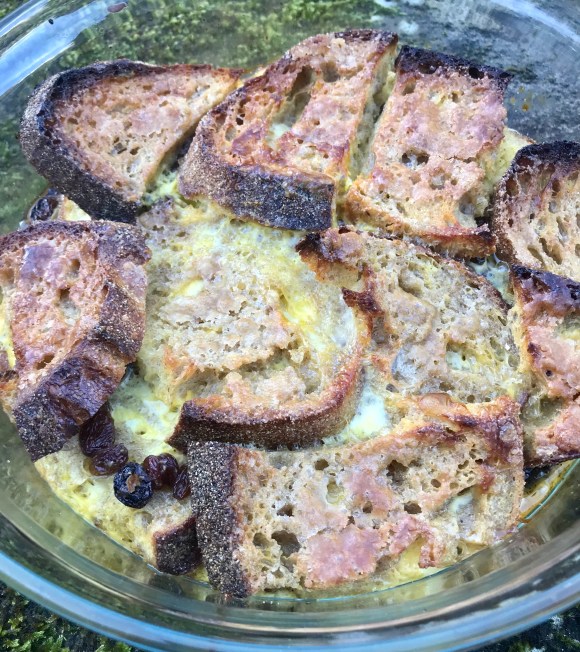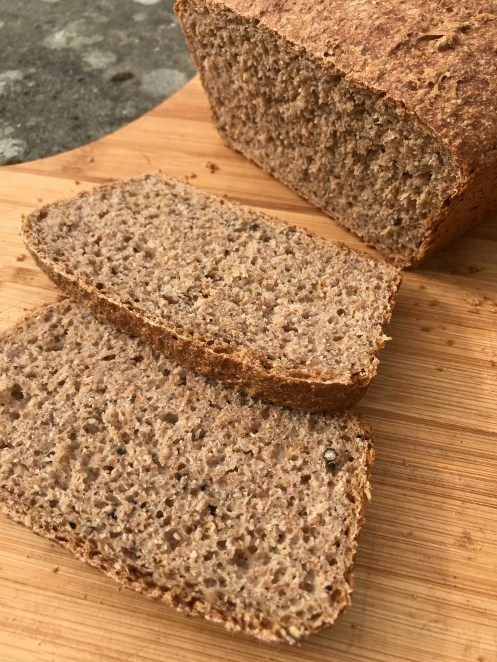Bread and butter pudding
This was one of the first recipes I wrote on this blog, way back when I started in September 2009. I think this might be a reflection of how much I love bread and butter pudding. It is a fantastic way to use up that staling loaf. With my bread courses I tend to have quite a bit of bread staling on the bread board so I am always thinking up new ways to use leftover bread.

There is lots of potential for varying this recipe. You can spread jam or marmalade on the slices or add some frozen (or fresh) berries or chocolate chunks instead of the dried fruit, but this is the recipe that I used to love as a child. You don’t need to be precise about the amount of bread you use, this recipe is all about using whatever you have leftover. If you use more or less than in this recipe then you may need to add or take away an egg in the custard. I have made bread pudding with left over croissants, brioche, fruit bread, walnut bread – basically any bread that you may have left over.
Ingredients
6-7 slices of stale bread
Approx 50g softened butter
3-4 tablespoons of light brown sugar
50-100g dried fruit (depending on how much you like in your pudding)
3 large eggs
500ml full fat milk
You will need an oven proof dish that will comfortably hold the slices of bread with room for the custard.
Method
Butter the slices of bread generously with butter. Lay half the slices in the ovenproof dish. Sprinkle two tablespoons of sugar and the dried fruit over the bread. Top with the remaining slices of bread. Beat the eggs and milk together in a jug. Pour the custard over the bread. Sprinkle more sugar over the top of the pudding.
Allow the pudding to sit for at least 30 minutes so that the custard can soak into the bread.
Preheat the oven to 180C, 350f, gas mark 4. Bake the pudding for 30-40 minutes until the custard is set and the top is golden brown.
Ready to learn more?
I have an online course that shows you other ways to use up your leftover bread. So, if you are as obsessed with bread as I am and end up with a staling loaf at the same time as you are fetching a fresh loaf out of the oven then this might be the course for you.

Bread and butter pudding Read More »













